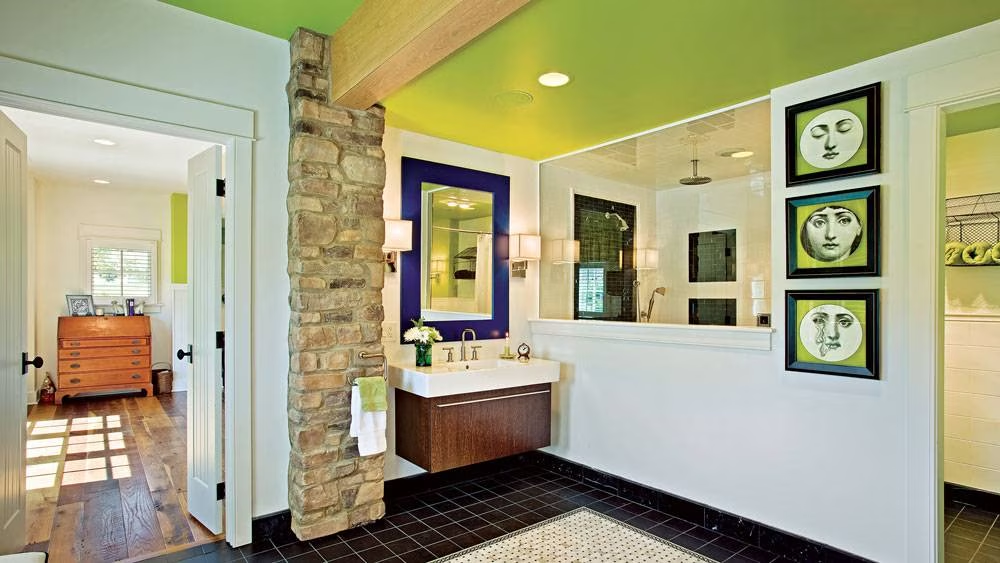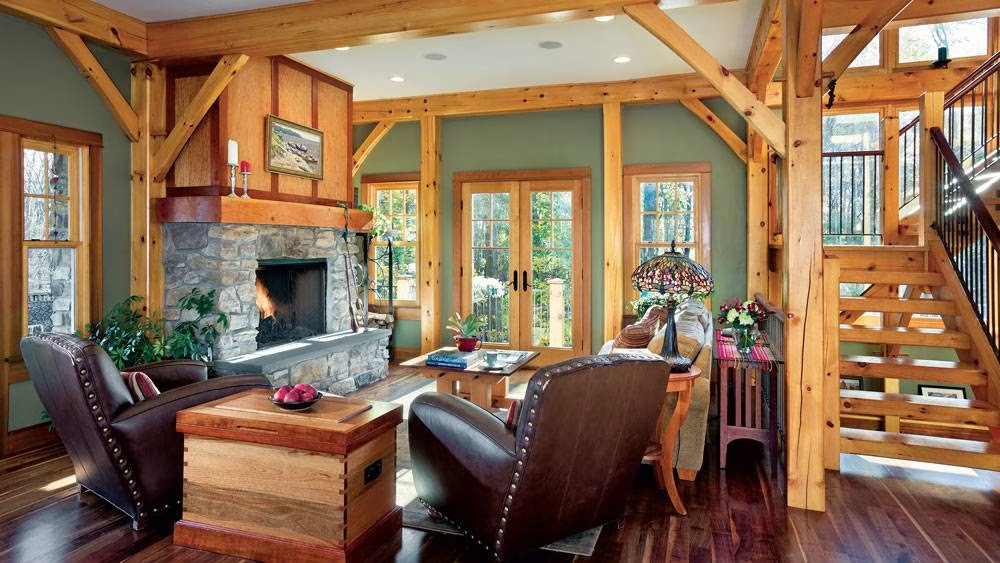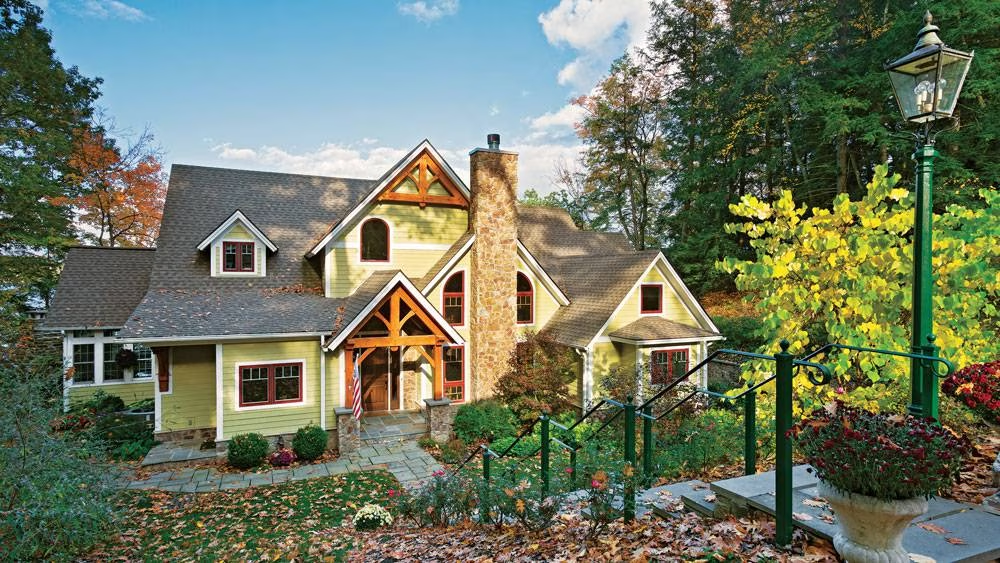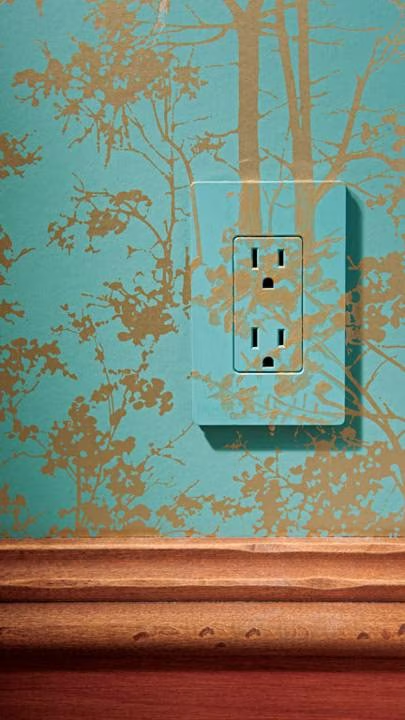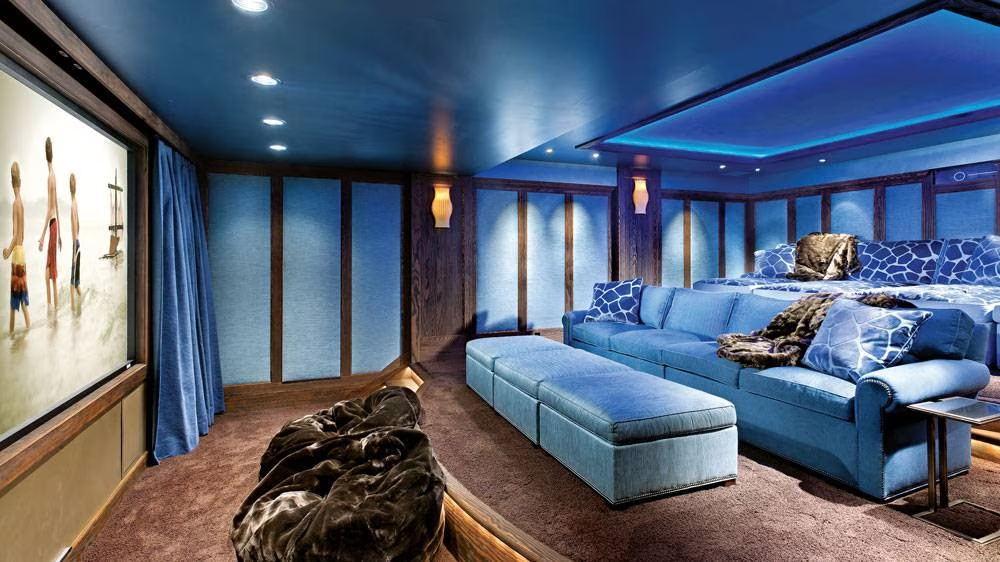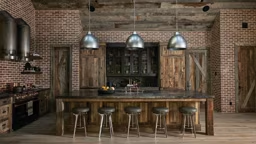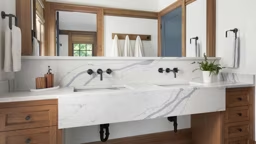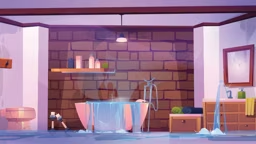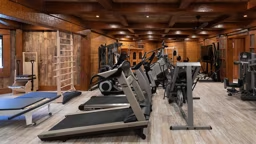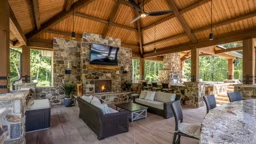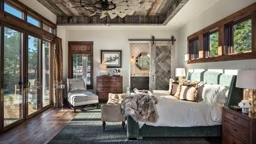Color can be magical. It can instantly transform a plain room, warm up a cold space or morph a tired area into a serene, personal oasis. In the correct combination, the simple addition of calming blues and greens or bold blasts of reds and oranges can alter the atmosphere and create an enchanting environment. Ready to get started? Here we share some great strategies to infuse your home with color.
1. What To Do When You Have No Clue
If you find yourself staring at the bare white or beige walls of your new timber home, don’t despair. Just think small. Start with the most public space of them all — the great room. Pick a color palette, then pull one color from those areas and carry it throughout the house. Consider this example: Take a red sofa and tone it down to burgundy for your overall palette, which you can continue in the more private rooms like the den, office and bedroom. If you have patterned upholstery, tapestry rugs or large works of art, take a dominant color from the pattern. If you want neutral paint for the walls, find the beiges and whites in the pattern.
2. Go With the Flow
It’s important to have a “flow plan” when carrying a single color throughout the home, although each room will wear the color in its own unique way. Choose a palette of similar shades, then mix and match them to create a sense of ease and energy when traveling from room to room.
3. Color Made Simple
Current trends are soothing neutrals for backdrop colors, from beige and natural, to taupe and gray. Other popular colors include shades of orange, red, darker copper and bronze with saddle and russet in mid-ranges. This is good news for wood home devotees who typically favor more natural, earthy color palettes.
4. The 60-30-10 Rule
What’s this? Think of a man dressed in a business suit. Sixty percent of the suit can be dark brown; 30 percent is his goldenrod-toned shirt and 10 percent is the accent color of his red tie. Break down your space the same way: 60 per cent is a dominant, thematic color (a brown leather sofa and a loveseat); 30 percent, a secondary color (a tan armchair), and 10 percent, an accent color (bold red throw pillows or an Oriental rug).
5. Paintless Color
Let’s face it; paint is the least expensive way to add color to a home. But a timber home, depending on the finishes you choose, doesn’t always have a lot of “paintable” spaces. So how do you infuse a timber home with color without the aid of a roller or brush? If you have the budget, fabrics like damask, silk and Flemish tapestries can be a wonderful, rich burst of color, but for less money, you can achieve a similar effect with inexpensive accents like throws, quilts made of colorful scarves, lamps, ceramic pitchers or pottery. Light is another way to brighten a room without a lot of fanfare. Use shadows and different light bulb colors to create ambiance.
6. Constructive Advice
Color doesn’t have to be an after-market affair. There are ways to give your home a healthy dose of your favorite hue. For example, glazed French lava stone for countertops in vibrant shades of red, gold, beige or aqua are gaining popularity according to kitchen and bath designers. For those minding the bottom line, laminate comes in a dizzying array of colors and patterns. When it comes to wood cabinetry, natural wood tones aren’t the only way to go. A gray-based green (think Vermont slate), pumpkin-patch orange and deep currant red can add warmth and vitality.
7. Architecturally Correct
The colors used on both the interior and exterior should reflect a timber home’s style and natural aesthetic. Accent colors should convey a rustic or earthy sensibility to blend naturally with the wood stain you’ve selected. Warm neutral shades work well with a variety of stains from light to dark. Try greens, terra cottas, blues and blue-based reds. These colors have a direct correlation with nature and provide a perfect complement for a log home.





